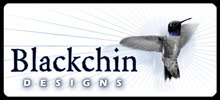 Not birding makes one crabby: A Ghost Crab near Fort Matanzas National Monument
Not birding makes one crabby: A Ghost Crab near Fort Matanzas National MonumentSometimes, I worry that I spend too much time thinking about birds. When I walk across campus to my classes in the morning, I keep my ears open for odd chips and chirps, and sometimes risk being late because I can't help stopping and staring into the trees looking for their source. This, no doubt, makes me look like a total idiot to both my students and colleagues.
This weekend reassured me that I'm not the only person on the planet with birds on the brain 24/7. But it also made me realize that I am, indeed, a complete idiot. There are birders out there who are freakishly good. And there are lots of them.
The cause of my angst was a weekend in St. Augustine, for the fall meeting of the
Florida Ornithological Society. This is not the sort of thing I would think of attending by myself, but a couple of my Gainesville birding buddies (one of whom is one the board), invited me to join them for the weekend. They're both fun people and awesome birders, so I was happy to hitch a ride with them, crash in a cheap but comfy motel with them, and spend the weekend talking birds.
We arrived on Friday night, hitched up with another group of birders attending the FOS meeting, and ended up at a surprisingly nice place for an early dinner: a seafood restaurant overlooking the water. We got an outdoor table right at the water's edge, and had surprisingly good food while watching Roseate Spoonbills and Ospreys (among other things) flying over the water. One of the guys had his binoculars with him during dinner, so we were able to ID almost everything we saw as we chowed down on crab cakes, fried alligator, and various interesting salads. We headed back to town (and to the initial "flocking", or social hour, of the FOS conference) just as the sun was setting. Good stuff.
Saturday morning was dedicated to birding field trips. Half of the couple I'd come with was in charge of leading one of the trips, to the inefficiently named
Guana Tolomato Matanzas Estuarine Research Reserve. Even the acronym to this place (GTMERR) is a mouthful. But there, we got a Peregrine Falcon, a Black-and-white Warbler, and two bright male Black-throated Blue Warblers, who were bathing in a pond just off the trail from us--a real treat to watch. We also got a white-morph Great Blue Heron, who had been hanging out there for about a week. Still, my favorite sighting of the day was the Roseate Spoonbill flying over the Holiday Inn where the FOS was being held, just as we were standing in the parking lot trying to work out carpool arrangements.
 A white morph Great Blue Heron: Note its pink legs
A white morph Great Blue Heron: Note its pink legsAfter lots of small talk with other conference attendees on the trip, I realized that over half of them were professional biologists/ornithologists, and the others were hard-core amateurs who'd been birding for decades. And I was an enthusiastic amateur, but still a total idiot.
What made me realize this was the Saturday afternoon program, which involved a "skin quiz": there were actually two quizzes, one for advanced birders, and one for beginning/intermediate birders. Both involved numbered stuffed birds skins to be identified.
I took one look at the table with the advanced skins on it, and realized I was WAY out of my league. At the gentler beginning/intermediate table, I immediately recognized a female Hooded Merganser and felt rather smart. There was something that looked like a Downey Woodpecker, but its bill seemed a bit big. Aha! Hairy Woodpecker! These actually occur regularly in Florida! So this also made me feel kind of smart.
I also correctly figured out a female Yellow-rumped Warbler and a Purple Swamphen, a bird I had never seen (but someone had mentioned them at dinner the night before for some random reason, so it seemed like a reasonable guess).
The take-home lesson here? Whenever you find yourself having a sunset dinner at a romantic waterside restaurant, be sure to work the words "Purple Swamphen" into the conversation. You never know what it might get you.
Saturday afternoon and evening consisted of various interesting bird-related talks. On Sunday, my friendly hosts and I went out for more birding: early morning was slow, but by lunchtime, we had spotted Blackpolll, Prarie, and Palm Warblers, and had spotted both Greater and Lesser Black-backed Gulls—both new birds for me.
By Sunday afternoon, my brain was fried. We returned to Gainesville by mid-afternoon. And then I set off by myself to look for birds once more, this time at Loblolly Nature Reserve, where a number of interesting warblers have been spotted as of late.
Of course, none of them chose to make an appearance for me (but the local mosquitos had their usual feast). I did, however, get a Grey Catbird—another lifer—and a pleasant afternoon in a shady, pretty, place.
Just the kind of peace and quiet I need to get through the long, birdless work week ahead.
















